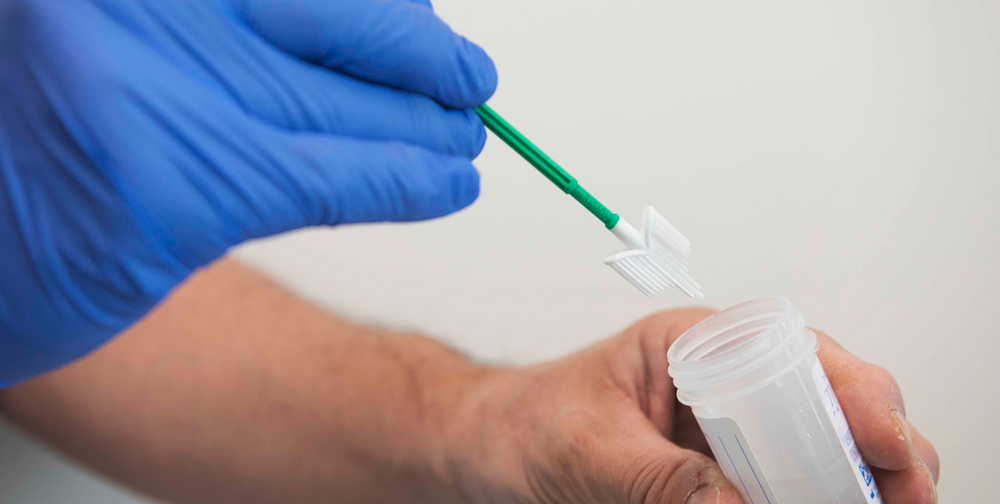Cervical smear
A cervical smear is carried out as part of a routine check-up. This is a simple test designed to detect cervical cancer and the various early stages ahead of time.
Read more under the photo.

Frequently asked questions:
- What does the preparation involve?
- What does this examination involve?
- What does the examination of the internal genital organs involve?
- What can be detected with a smear test?
- Who is it is best to go to for a smear test?
- How often should you have a smear test?
What does the preparation involve?
The examination is easier with an empty bladder. So make sure you go to the toilet first. Toilets are available in the consultation facilities.
What does this examination involve?
You take your place on an examination chair with your legs spread open. The doctor inserts a speculum (a duckbill-shaped device) into the vagina. The speculum is then opened. This makes the cervix, the lowest part of the uterus, visible. The doctor then uses a small brush to collect a few surface cells from the cervix. These are examined in a laboratory for abnormalities.
A smear test is usually not painful. Inserting the speculum and collecting the cells may feel unpleasant for a short time. Sometimes the cervix bleeds afterwards. This does not do any harm. The blood loss usually stops within one day.
What does the examination of the internal genital organs involve?
To examine the internal genital organs, one or two fingers are inserted into the vagina and your abdomen is felt with the other hand (vaginal touch). This almost never hurts. This examination enables the gynaecologist to assess the position and size of the uterus and the ovaries and to examine the painful spot if the patient is experiencing problems.
After the gynaecological examination, a vaginal ultrasound may also be carried out.
What can be detected with a smear test?
Smear tests are carried out to examine whether you have early-stage cervical cancer. With a ‘normal’ smear, the risk of cervical cancer is very small. With early-stage cancer, there is a small risk that you may develop cervical cancer later on. A simple treatment for such early-stage disorders can avoid the need for a bigger operation for cancer many years later.
Who is it best to go to for a smear test?
As regards the result of the smear test, it makes no difference whether you are screened by your GP or a gynaecologist. The main thing is that the doctor is familiar with the routine necessary to take this smear.
How often should you have a smear test?
Precisely because the smear test is not infallible, it must be done regularly. If the early stage is missed the first time, then hopefully it will be picked up the next time. Missing once is not all that serious, because it takes a long time for an abnormality to develop through the various early stages to become cancer.
The general guideline is:
- From the age of 20: if you became sexually active early on, then it is advisable to start from around the age of 20 rather than 25.
- From the age of 25: a smear test is recommended every three years.
- Until the age of 65: you have regular examinations and if the last few smear tests were good, then when you are 65 years old you can stop. The risk of cervical cancer developing after this age is very small.
